Why you don't need SPA
By Guillaume Briday
Before starting
- Quick introduction
- Not a silver bullet
- Know your context
Why?
- More interactive applications
- More features to ship
- Reduce the overall complexity
- To reduce scalability issues?
Back in my days...

Plain AJAX requests
$("#my-button").click(function () {
const name = $("#city-select").val()
$.ajax({
url: `/my/awesome/api?name=${name}`,
done (data) {
const div = $("<ul></ul>")
data.forEach((item) => {
div.append(`<li>${item.name}</li>`)
})
$("#my-content").html(div)
}
})
})
Rails UJS & SJR
def create @user = User.new(params[:user]) respond_to do |format| if @user.save format.html { ... } format.js else format.html { ... } format.js end end end
// app/views/users/create.js.erb
const users = document.querySelector("#users");
users.insertAdjacentHTML("beforeend", "<%= j render(@user) %>");
Rails UJS & SJR
It was cool but...

Rails UJS & SJR
- Hard to maintain in complex UIs
- Hard to scale in big teams
- Configuration over convention
- Lots of stuff to write manually
- Most Back-end frameworks don't support that
Here come the big guys
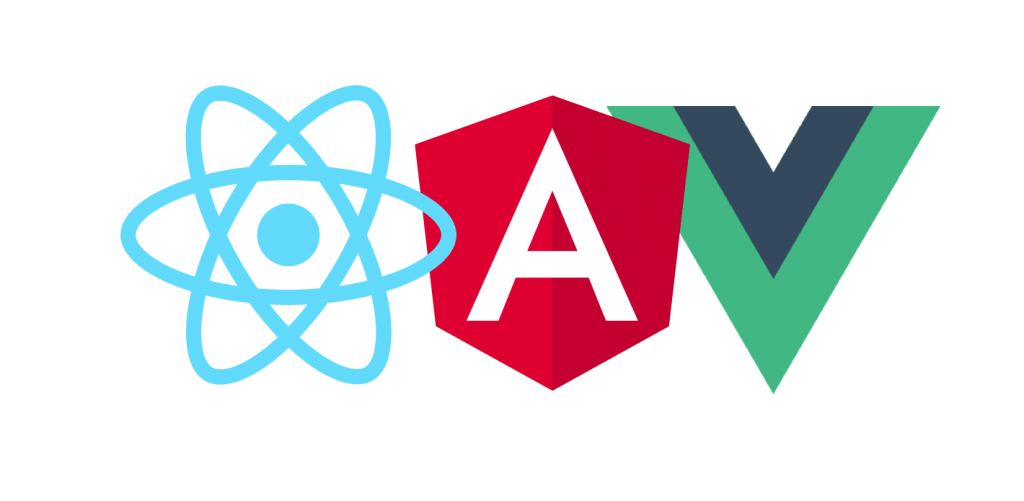
Front-end Frameworks & SPAs
- Render happens in the browser
- Fetch data in JSON via AJAX
- DOM matches the data
React component
import { useState } from 'react'
function MyComponent() {
const [name, setName] = useState('')
const [items, setItems] = useState([])
useEffect(() => {
fetch(`/my/awesome/api?name=${name}`)
.then(res => res.json())
.then((data) => {
setItems(data)
})
}, [name])
return (
...
<ul>
{items.map(item => (
<li key="{item.id}">
{item.name}
</li>
))}
</ul>
)
}
From manipulating DOM with jQuery to manipulate Data with React.
- Much easier... in theory
How does it work?
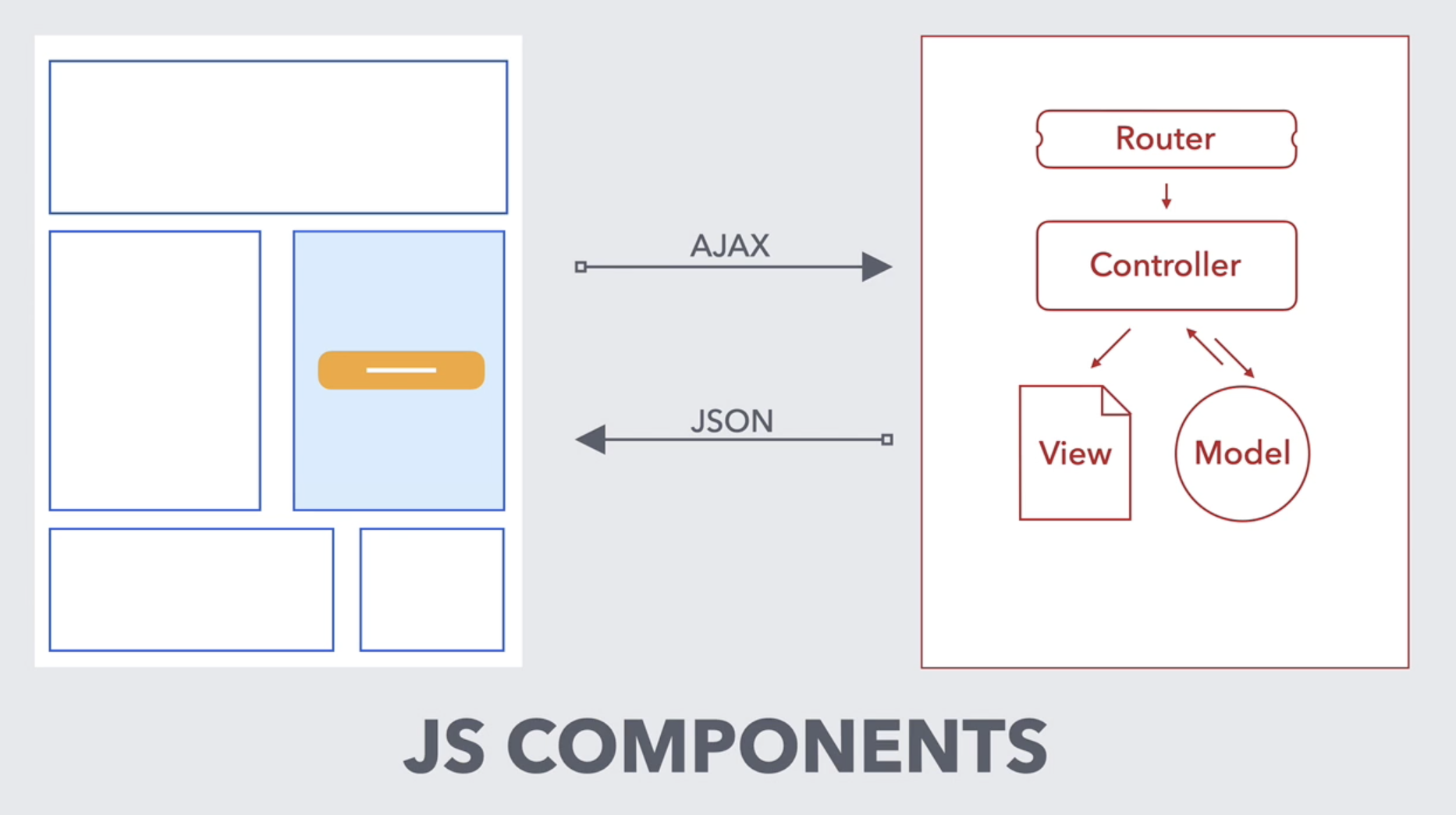
Front-end Frameworks & SPAs

Front-end Frameworks & SPAs

Front-end Frameworks & SPAs
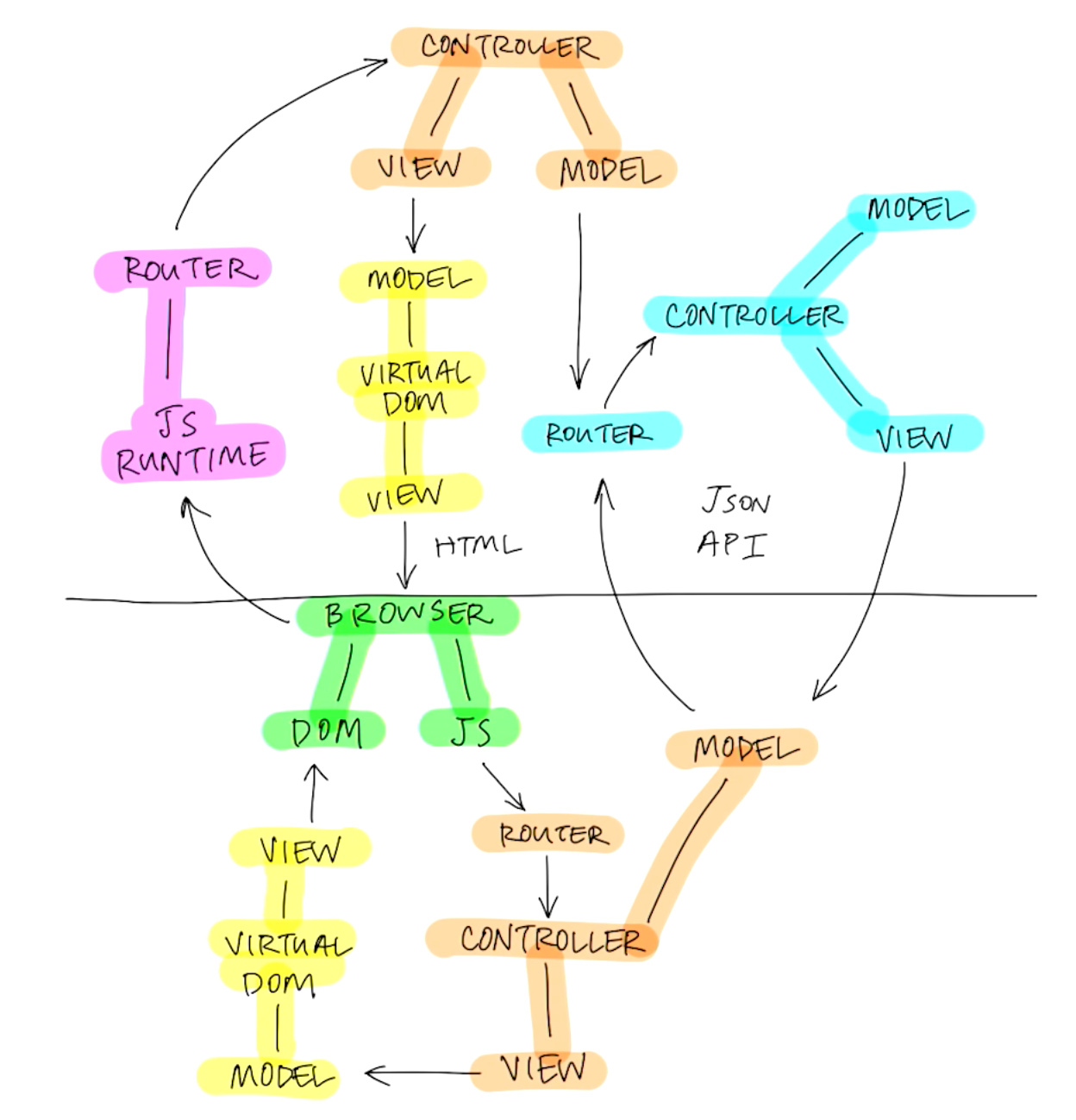
Incredible hidden complexity
- Business Logic Duplication
- Overall performance issues
- Complex toolchain (Bundle splitting, Pre-rendering, Webpack, etc)
- API and data interchanges
- Organizational challenges
- Tons of JS
Front-end Frameworks & SPAs

But why?
- To prevent full page reload?
- To add interactive actions? (likes, comments, charts, etc)
- To refresh parts of the page dynamically
- For scalability issues?
- To separate concerns?
- You are not Facebook
Here comes Hotwire
Maybe you just need Turbo with Stimulus...
And https://www.stimulus-components.com/ 😇

Basic concept
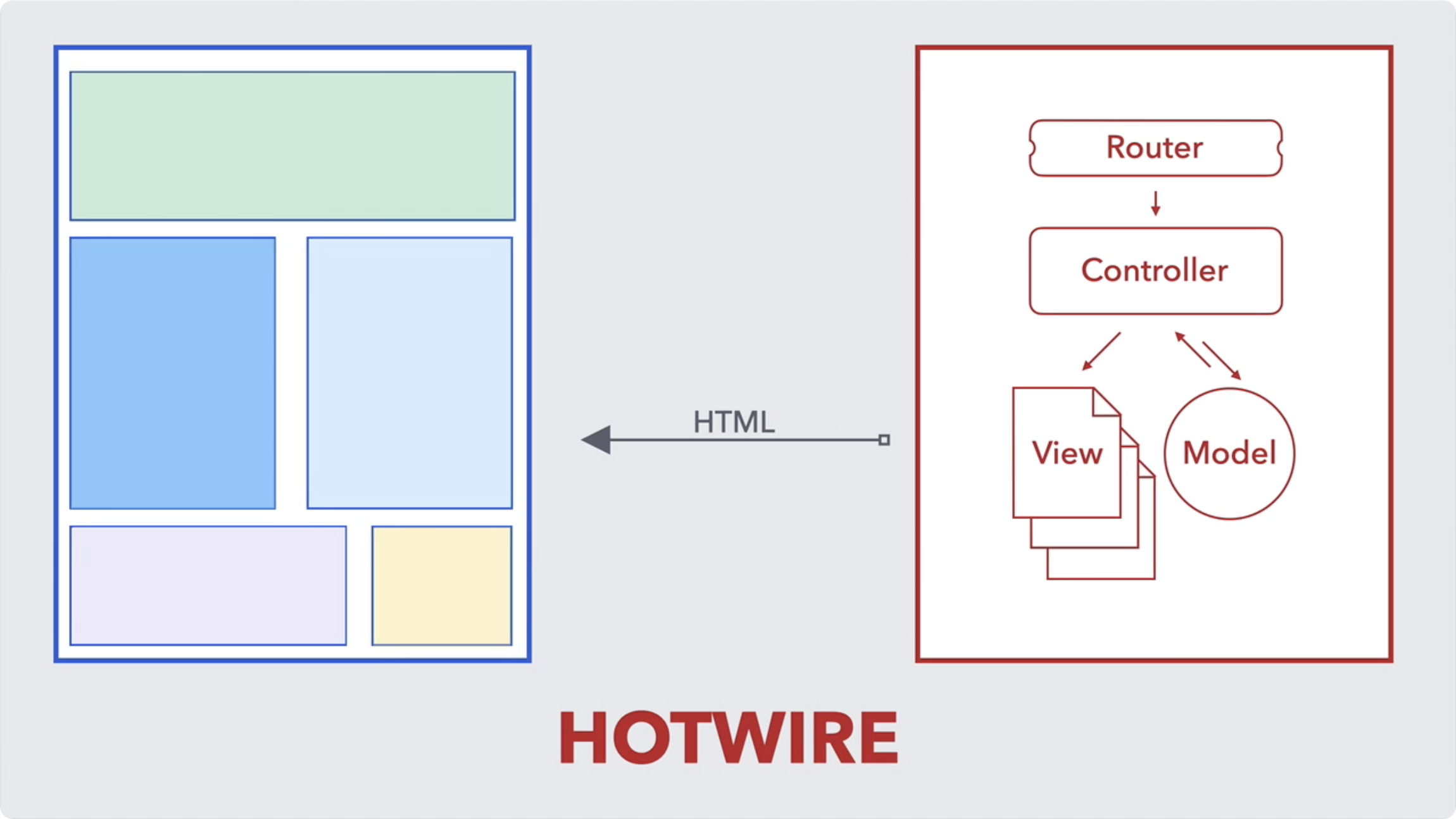
Turbo Frames
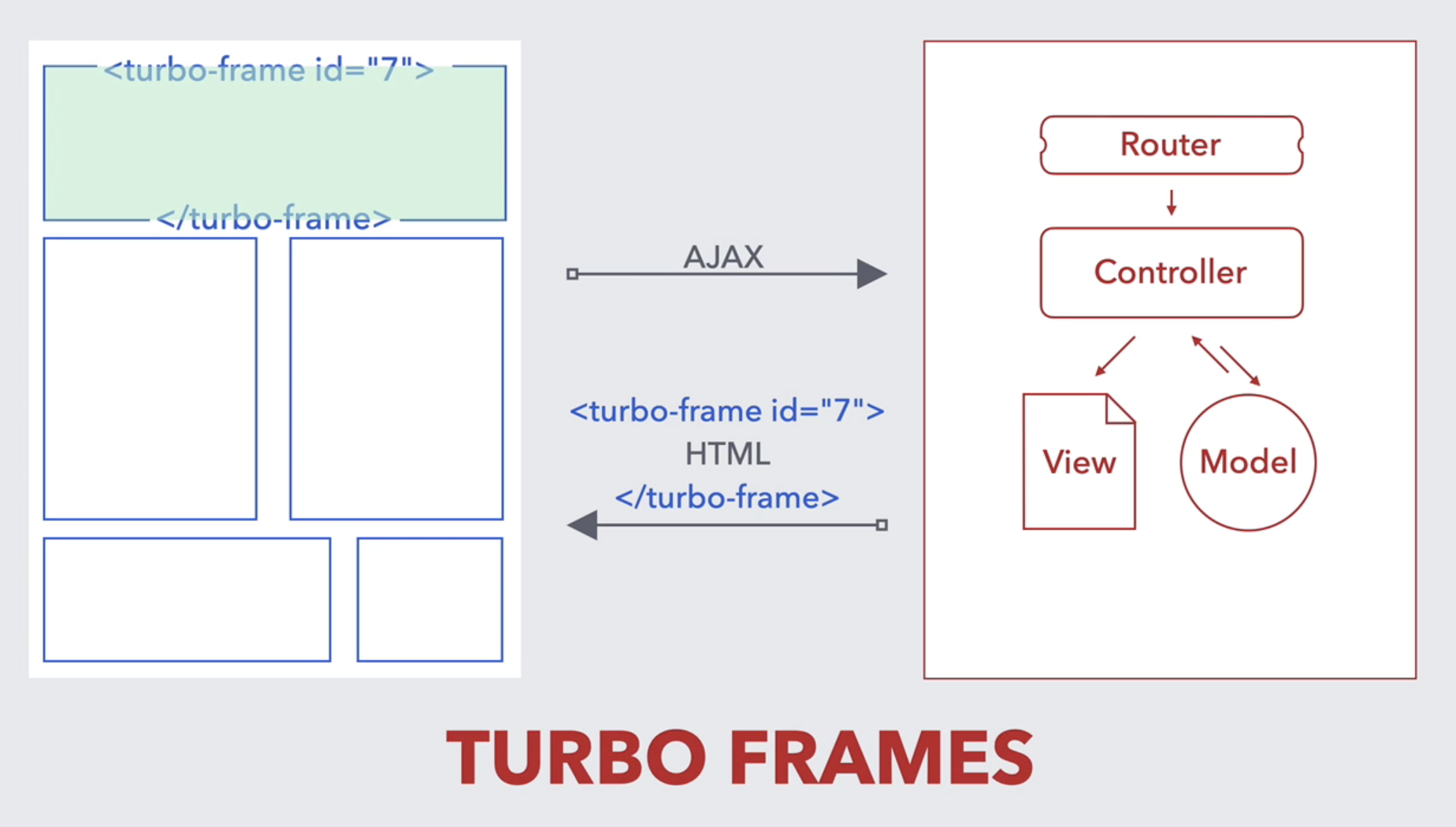
Turbo Frames
<%# app/views/todos/show.html.erb %>
<h1>My awesome todo</h1>
<%= turbo_frame_tag @todo do %>
<h2><%= @todo.name %></h2>
<p><%= @todo.description %></p>
<%= link_to 'Edit this todo', edit_todo_path(@todo) %>
<% end %>
<%# app/views/todos/edit.html.erb %>
<h1>Editing message</h1>
<%= turbo_frame_tag @todo do %>
<%# form_with ... %>
<% end %>
Turbo Frames
class CommentsController < ApplicationController
def index
budget = Budget.find(params[:budget_id])
render partial: 'comments/comments', locals: { comments: budget.comments }
end
end
<div class="tab-pane">
<%= turbo_frame_tag :comments, src: comments_path(budget_id: @budget.id), loading: 'lazy' do
<%# Adding a nice loader that will be replaced once the partial gets loaded. %>
<i class="fas fa-spinner fa-spin"></i>
<% end %>
</div>
Turbo Frames
Turbo Frames
- Update just what you need
- No JavaScript required
- Basically instant
- Everything stay on the server side
- Back-end dependent
- Progressive enhancement is possible
- Plug'n'play
What if you need to update multiple frames at once
Or update frames from HTTP responses?

Turbo Stream
<%# app/views/todos/show.html.erb %> <%= turbo_stream_from @todo %> <div id="<%= dom_id(@todo) %>"> <h1><%= @todo.name %></h1> </div>
Turbo Stream
class Todo < ApplicationRecord # broadcasts after_create_commit -> { broadcast_append_to self } after_destroy_commit -> { broadcast_remove_to self } after_update_commit -> { broadcast_replace_to self } end
Demo

You now 👇

Don't reinvent the wheel
- GraphQL
- React SSR (SEO, Speed, db calls)
- Fetch / Link / Routers
- State managers
- Form & AJAX libraries
- Only half of your app
Don't reinvent the wheel
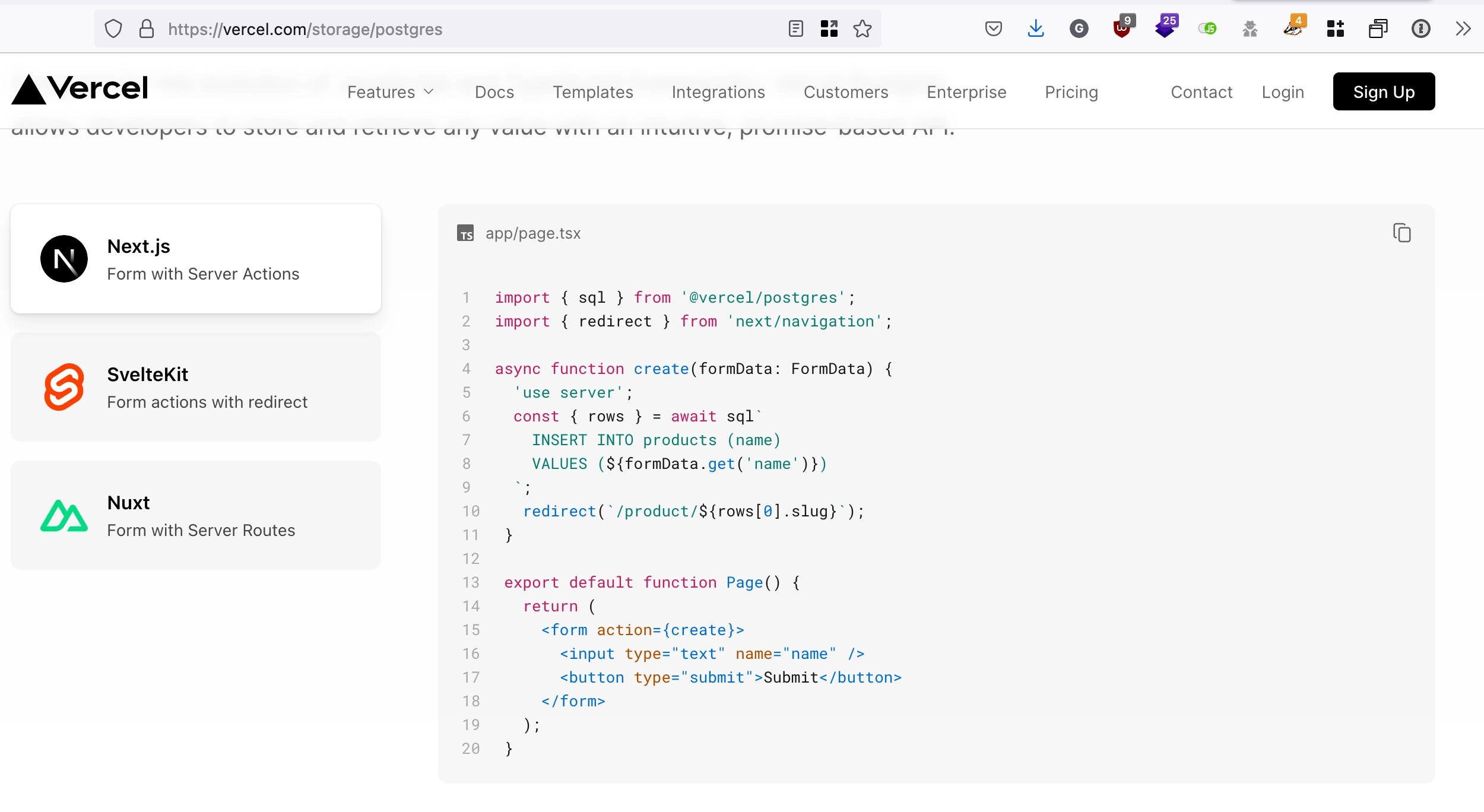
Remember: Nobody cares
- Most website have page reload
- High interactivity websites are really rare
- Focus on your Time to Market
- And on your customers needs
- Customers don't care. You don't too.
- Make your app fast and add cache.
Remember: Nobody cares
- Backend is boring. Because it's a solved problem.
- Don't fall into the Hype Driven Development.
Conclusion
- SPA are great, just use it wisely.
- Choose the right tool for your (real) needs.


Great posts

Thanks ! 🙏
Why you don't need SPA By Guillaume Briday